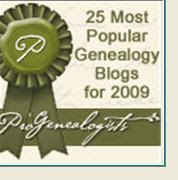There is relatively little written on the Jews of Sicily although some researchers are working in the archives there and there are archeologists excavating remains of Jewish sites.
There is also a fascinating 17th century map of the island, which was at the crossroads of the Mediterranean for thousands of years.
Sicily was, of course, not just Greek. Phoenicians, Carthaginians, and Romans in antiquity, and later the Byzantines, Arabs, Normans, Swabians (Hohenstaufen), French (Angevins), and Spaniards (Aragonese) also entered the island as conquerors.
The author writes about the Sicilian Jewish role in the island's history until the 1492 Expulsion from Spain and a year later when the Jews were expelled from Sicily; but claims that Spanish anti-Semitism was not shared by the Sicilians.
The Viceroy of Sicily, Don Ferdinando de Acugna, did not make the edict public until two and a half months after its proclamation. Some parts of Sicilian territory, for instance Pantelleria, a little island in the Channel of Sicily, were entirely populated by Jews.
The events of 1492-1493 ended 15 centuries of Jewish history, and the author writes that today there is more Jewish archeological evidence in Sicily than in all of Spain.
Says the author, "Some scholars have already pointed out that part of the largest number of Jews captured and enslaved by the Romans after the sack of Jerusalem by Pompey in 63 BCE could have ended in Sicily and that the Proconsul Crassus sold 30,000 thousand captured Jews. He claims that it isn't far-getched to assume that some of them went to Sicily."
In a famous paper published in 1957, Cecil Roth - among other things, author of A History of the Marranos - tells us that "the first native-born European Jewish writer of whom we have knowledge is Caecilius Calactinus . . . who flourished in the first century before the Christian era" and was also well known outside the Jewish intellectual community.
There are many scholars, rabbis, poets, and other Sicilian intellectuals who were Jewish. Named in the article are Samuel ben Nissim al-Masnut, author of Synagogal poetry, midrashic commentaries, and a book on Job, Ma'ayan Ganim republished in Berlin in 1899. Samuel ben Nissim, born in Palermo, later emigrated later to Spain where he was called "Sikilli" or "the Sicilian." Aaron Abulrabbi, born in Catania, compiled a lost defense of Judaism and a commentary on Rashi, was born in Catania. Abu Aflah, author of theosophical and magical works, was from Syracuse.
Twelfth century Anatoli ben Joseph was a rabbinical judge in Alexandria, Egypt, posed a difficult question to the rabbis of Syracuse in Sicily, and they submitted the topic to Moses Maimonides, who provided the answer in one of the Responsa.
Yehuda Shmuel ben Nissim Abu'l Farag, from Agrigento, was a convert to Christianity under the name of Raimondo da Moncada and "one of the most eminent European Hebraists of the fifteenth century;" translated the Koran and taught Hebrew and Kabbalah to one of the most eminent figures of the Italian Renaissance under the name Pico della Mirandola.
The discovery of the Cairo Geniza confirmed not only the existence of an extensive Jewish trade in silk and books between the 10th-12th century, but also the existence of sea and land routes that were in daily use between the Sicily and Palestine.
Around 120 CE, Rabbi Akiva stopped in Syracuse, reporting a small Jewish community. Almost every major Sicilian city has an area called la Giudecca, the Jewish quarter, and it is still possible to find the mikveh site. "In Syracuse, for example, the original ritual bath of the community is located under the church of San Filippo in the center of la Giudecca."
Sicilian Jews, says the article, had unique words for Jewish things. For example, Simchat Torah became La festa della Mortilla; kosher meat became carne tajura (possibly from the Hebrew tahor, or pure); and the synagogue is not Bet Knesset but la meschita (or muschitta).
Jews have left their mark in many Sicilian areas, from their language, to their culinary traditions, to the topography of cities, and in the names of the people. Most of these connections remain to be investigated, and much is yet to be done to better understand these Jewish communities, which have lived for more than fifteen centuries on the island, leaving us precious pearls still waiting to be discovered.
Read the complete article here.





































No comments:
Post a Comment